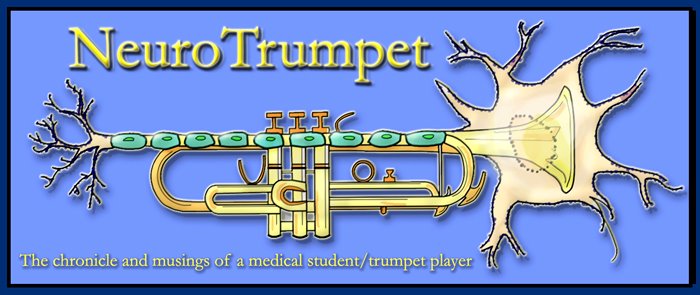It’s appropriate that I ended the title of my previous blog with a question mark (“End of the Maelstrom?”). The answer is no. It was only the eye of the storm. I won’t dive into a full explanation; you can probably guess (e.g. the main contributor is the colossal information load that I’m supposed to assimilate). It’s old news, but the pressure is mounting as the exam (this Friday) no longer looms in the horizon, but terrorizes me like a swiftly advancing tsunami.
The exam will consist of 75 computer-based questions (55 medically-related anatomy; 20 embryology) and 50 practical questions (40 tagged structures on our cadavers, plus 10 from cross sections and medical imaging). The computer-based questions begin at 8am. The practicals are offered to different groups at various times throughout the day. Because I always draw the short straw with such matters, I will be in the first group, which means I have little-to-no time to squeeze extra studying time in beforehand.
I feel moderately confident. I took a practice quiz and practice practical and passed both (meaning I got above 70%); many people failed. They were designed to be a little more difficult than the real exams, too. Still, I feel that the older information is leaking out as I try to stuff more in my head. We’re on the lower limb now, and I’m starting to forget the arterial and nervous roadmaps of the upper extremity. My plan is to spend the rest of today learning this weeks’ lecture material, and all of tomorrow consolidation the entire 4 weeks’ worth of knowledge.
Enough exam-talk, though. We had a potluck at our house this past weekend after playing volleyball for a couple hours. I made lasagna (thanks, mom), Mike brought wings, and Sarah and her visiting boyfriend brought the ingredients to make turkey egg-rolls. Delicious. Much Rockband2 ensued, naturally.
We had our first experience with ultrasound last week. There was a lecture describing the mechanics of the technology, followed by some demonstrations. At the beginning of the lecture, none of the images made sense; it all looked like grayish blobs. Toward the end of the lecture, things were starting to click. By the time we had the opportunity to use ultrasound machines ourselves the next day, I could mostly understand what I was seeing. We imaged the glenohumeral (shoulder) joint, structures in the wrist, and the knee joint.
Last week culminated in a Community Project Fair, during which we rotated around to 60 or so tables for organizations that offer volunteer opportunities to med students. We can volunteer with as many as we’d like, but we are to choose one to serve as a community project to which we will devote a substantial amount of time and energy. There are at least two I’m seriously considering. One involves a mentorship with an elementary school student for which we’d visit the kids at their school once a week (or so) and serve as a positive role model. Another involves counseling physical therapy patients on proper exercise technique, nutrition, answering medical questions etc. There’s also a program that I’m not considering for my project—but in which I plan to participate—called “Walk with a Doc.” All you do is show up at the park on a Saturday morning and spend an hour walking around with elderly individuals. It sounds like a great way to spend an hour of light exercise.
Earlier this week I had my first practical assignment for the clinical skills center as a part of the CAPS course. I was sent into a room with a patient and instructed to use the BATHE method (Background, Affect, Trouble, Handling, Empathy) for developing/refining information acquisition and interpersonal skills. In essence, I introduced myself to a standardized patient (actor) as a first year medical student, washed my hands, and had a heart-to-heart with a woman with knee pain. The point of the exercise was to cull as much information from her (Background) using open-ended questions, eventually delving into second-order effects of her malady (Affect, Trouble, Handling) and empathizing with her. Apparently, she couldn’t use the stair-master due to the pain, for which she was taking Ibuprofen, and which was putting additional strain on her already stressful life (a single-parent divorcee). The entire encounter was video-recorded and I will receive feedback next week.
My goal for the weekend is to construct a more-upbeat post during which I’ll discuss some of the more entertaining things I’ve been doing. Wow. The weekend… I can barely wait.
In the meantime, here’s the cool medical thingy of the day: Caput Medusae. The responsibility veins are to return deoxygenated blood centrally. Superficial veins flow to deep veins, which eventually return the blood to the heart. Sometimes veins get backed-up, and they distend and pool with blood if there’s resistance in the circulation more centrally (that’s how we get varicose veins). In the case of Caput Medusae, the superficial epigastric veins become distended and look like the picture below. It’s named for the snake-like appearance, which resembles Medusa’s hair (which, if you remember your Greek mythology, is composed of snakes). This is most often due to inadequate hepatic portal circulation resulting from diseases like cirrhosis of the liver.


8am. Dear lord. You can do it!
ReplyDeleteCookage! Rock on!
I refrain with difficulty from public BATHE commentation. O the possibilities...
Disturbingly fascinating. That photo could pass for a movie still of an impending parasitic alien worm birth.
I wonder what community volunteer project I would like. Anything a little bit more action filled than the ones you mentioned?
ReplyDeleteAnd what did you decide?